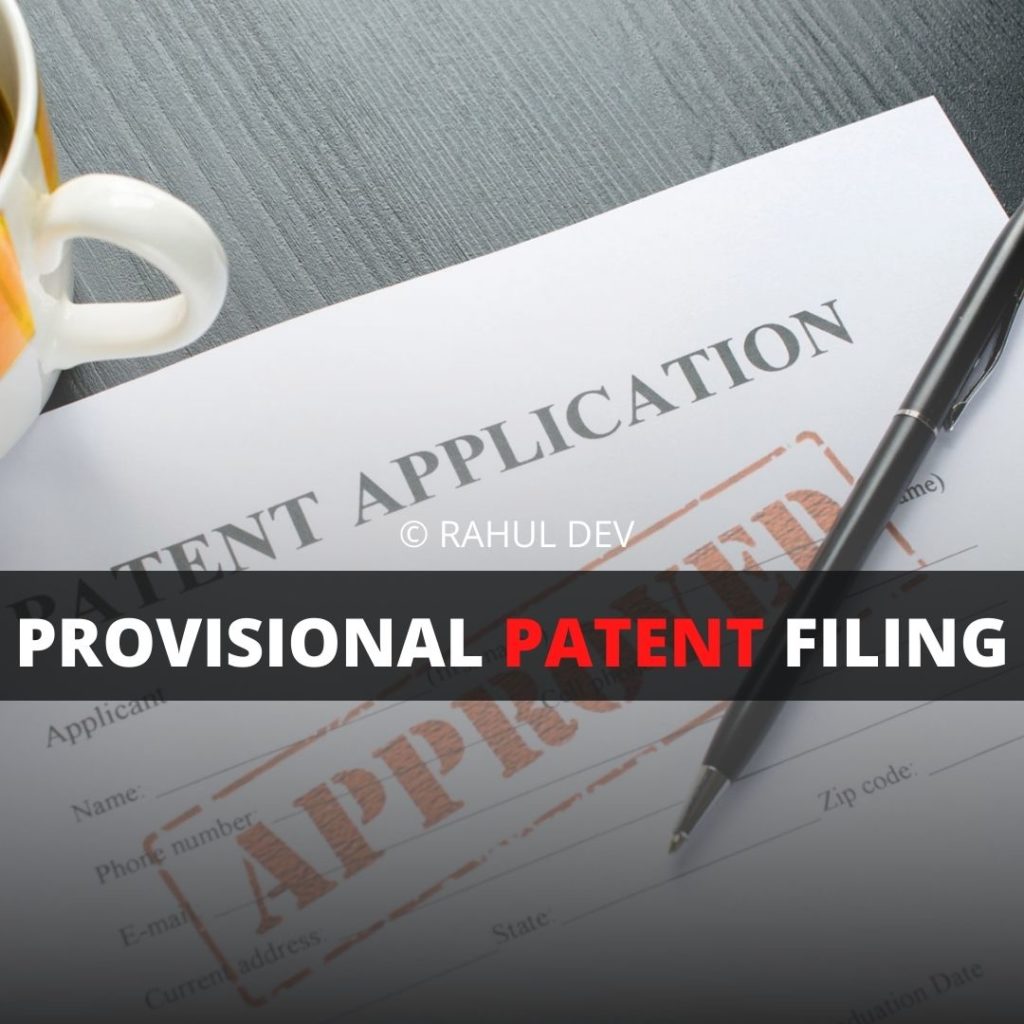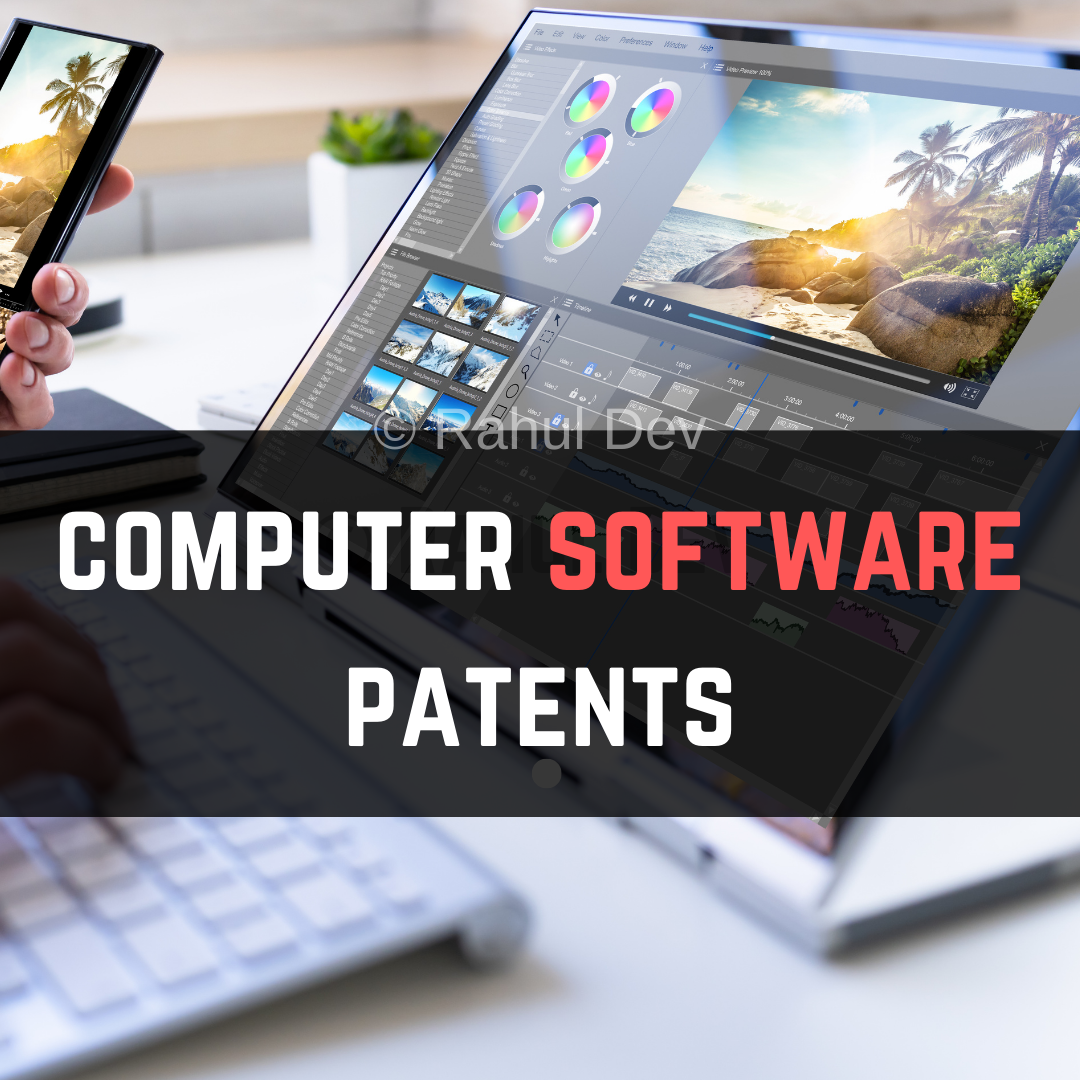Provisional Patent Filing
Provisional patent application is filed when the invention is not fully ready. A well drafted provisional patent provides patent pending rights to establish inventorship and patent ownership as patent office follows first to file approach to determine the true inventor of a patent covering new idea or product.
Formulating a sound patent strategy for your technology driven company is very important in the current era. Across the globe, the in-house patent counsels, heads of research departments, tech based start-ups and inventors file a preliminary patent application for their invention / idea before the patent office and is known as provisional patent application.
How to Patent a Product?
It is extremely common for the inventors to ask this question about patenting a novel and inventive product. The first and foremost requirement for inventors while planning for patent process is to maintain proper records of their invention.
In essence, laboratory notebooks, idea related documentation, technical specification and other details should be recorded with date, which can establish clear inventorship and ownership of the invention at a later date.
It is common for the inventors to docket each and every step of the inventive process, inventive product and novel aspects of the invention, with a view to determine the patentability or patent eligibility of the invention.
Subsequently, a detailed and thorough patent search is conducted to determine the relevant prior art, which can challenge the novelty and inventive step (non-obviousness) of the invention.
While conducting a patent search, the patent searcher or the patent attorney conducts detailed patent search and analysis across various databases, such as, for example, Google Patents, USPTO Patent Database, EPO, UKIPO, JPO etc.
Such patent search is conducted by forming multiple patent search strings and using these strings in different combinations by using boolean operators like AND, OR etc.
How much does it cost to file a patent?
The cost of filing a patent and obtaining patent rights depend upon multiple steps. The patent filing process begins by engaging a patent attorney, who charges a fee for conducting a patent search and drafting a patent application, which may be a provisional patent application (PPA) followed by a non-provisional patent application (NPA), or a NPA directly.
The professional charges for patent searching and patent drafting by a competent patent attorney may be in the range of 2000$ to 8000$, or maybe upwards depending upon the jurisdiction of the patent and experience of the patent lawyer.
Additional component to calculate the patent cost includes official filing fee, which again varies for each jurisdiction and is further dependent upon the category of the patent applicant, i.e. one or more natural person(s) or one or more legal entities.
Once a patent application is filed, additional cost is required to maintain the pending patent application, and once the patent office issues a patent office action or a patent examination report, further cost is incurred for responding to such objections by way of patent office action response.
Thereafter, once the patent prosecution process is complete, patent renewal fee is required to be paid at regular intervals during the term of the patent. Hence, as may be seen, the total cost of a patent depends upon multiple steps, subject to the jurisdiction and requirements specified by the local patent office.
How do you patent an idea or a product?
To protect a new idea or a new product, a well crafted patent strategy is required that ensures that the new idea or the new product is not infringed by third parties. One important point to be considered is that patent laws across various countries or jurisdictions require that a patent application must be filed before disclosing or discussing the idea publicly. This is so because once a new idea is shared publicly without filing a patent application, it becomes public knowledge and anyone is free to execute the idea.
How do I turn my idea into a product?
Successful conversion of new ideas into products requires detailed market research, development of prototypes and appropriate patent marketing. Operationally, patent licensing opportunities can be determined by conducting thorough studies about market potential, financial and technical due diligence, regulatory analysis and SWOT analysis.
What is a provisional patent application?
The provisional patent application is a legal document filed before the patent office (For example, United States Patent and Trademark Office (USPTO), Indian Patent Office (IPO) or any other patent office.) If a US national is filing patent before the USPTO, the patent application would be known as U.S. national patent application having validity in U.S. alone. Even though, formal set of patent claims are not mandatory in the provisional patent filing we recommend our clients to write a broad set of patent claims in the provisional patent application.
However, in order to obtain a granted patent, the patent applicant must fully and particularly describe the invention in detail and describe the best mode in a complete specification. It is important to remember the deadline for filing Non-provisional patent application. Once the Non-provisional patent application in filed in the home country, one can file international PCT patent before the WIPO.
Missing the deadline for patent filing of complete / non-provisional patent application [12 months from filing provisional patent application] will cause irreparable loss and the provisional application will simply expire.
To read more articles related to Provisional patent applications: click here
Frequently Asked Questions by Inventors
- Why is priority date of patent claims of a complete patent specification important?
Priority date implies the earliest date from which the patent rights begin, and while determining the term of a patent or during patent infringement lawsuits, the priority date plays a crucial role.
- Why to file a provisional patent application before filing a non-provisional patent specification
It is common for inventors to develop prototypes and pen down ideas during early stages before finalising the exact features of the invention. To ensure appropriate protection during this period, and to establish ownership by creating patent pending rights, it is important for the inventors to file a provisional patent application.
Provisional Patent Application
A provisional application is a summary of the invention and is filed to protect the invention at its early stage.
Since 8th June, 1995, U.S Patent and Trademark Office (USPTO) has provided inventors the choice of filing a provisional application for patent which was intended to provide a lower-cost prior patent filing within the United States and to administer U.S. applicants equality with foreign applicants under the General Agreement on Tariffs and Trade (GATT) Uruguay Round Agreements.
If an applicant has filed the a Provisional Patent Application for grant of patent he/she has to file the Non-Provisional/Complete Patent Application filed under U.S. Code § 111 of Title 35, within a period of 12 months from the date of filing of the provisional application or else the application will be considered to be abandoned. The pendency period of 12 months cannot be extended, but if the Non-Provisional/Complete Patent Application is filed after 14 months of filing the Provisional Patent Application, such application may be accepted by filing a grantable petition (including a statement that the delay in filing the Non-Provisional/Complete Patent Application was not deliberate and the required petition fee has been paid) to reinstate the advantages under 37 CFR (Code of Federal Regulations) 1.78.
Non-Provisional/Complete Patents v. Provisional Patents
> Non-Provisional/Complete Patents are most undeviating and therefore, the shortest path to grant of patents, whereas, Provisional Patents have a much lower cost of applying as compared to Non-Provisional/Complete Patents.
> A Non-Provisional/Complete Patents is good for inventions that have a short half life much like electronics and software which are about to be launched into the market, whereas, Provisional Patents are good for inventions that take time for R&D and thus needs to be kept under wraps by getting an additional year for filing for grant of the patent with complete specifications of the patent.
> In case the applicant wants to make additions after filling for Non-Provisional/Complete Patents, he/she has to do it by re-filing those addition inventions, whereas in Provisional Patents, the applicant has one whole year to make all the changes he/she wants in the patent and it also benefits the applicant by addition one extra year to the patent life (i.e., from 20 years to 21 years).
> One can only file his/her patents application as Non-Provisional/Complete Patent, in one time, whereas multiple Provisional Patent Applications may be filed by the applicant and be considered as one at the end of one year.
Limitation of Provisional Patent Applications
With some benefits, the Provisional Patents also attract certain limitations which are as follows:
1) The Provisional Patents Applications cost more than Complete Applications since the effort put in is double.
2) Even though the patent specifications will be kept from public record, the invention will has to be disclosed.
3) In case the applicant misses the one year deadline of filing the Non-Provisional/Complete Patent Application, the application will be considered as abandoned.
Filing of Provisional Patents Applications
A filing date will be granted to a Provisional Patent Application only when it contains a written description of the invention, fulfilling with all requirements of U.S. Code § 112(a) of Title 35.
The USPTO provides the following two documents for filing of Provisional Patent Application which have to be filled by either the applicant himself or his/her legal representative:
* Provisional Cover Sheet identifying;
* the application as a provisional application for patent;
* the name(s) of all inventors;
* inventor residence(s);
* title of the invention;
* name and registration number of attorney or agent and docket number (if applicable);
* correspondence address; and
* any U.S. Government agency that has a property interest in the application.
* Fee Transmittal Form as set forth in 37 CFR (Code of Federal Regulations) 1.16(d)
The provisional application (written description and drawings), filing fee and cover sheet can be filed electronically using EFS-Web or filed by mail.
Electronically Using EFS-Web: The provisional application can be filed electronically only if EFS-Web is used. EFS-Web permits patent applications, together with provisional applications, to be filed safely via the Internet.
Applicants prepare documents in Portable Document Format (PDF), attach the documents, authenticate that the PDF documents will be well-matched with USPTO internal automated information systems, submit the documents, and pay fees with real-time payment processing. When fillable EFS-Web forms are used, the data entered into the forms is robotically loaded into USPTO information systems. Further information on EFS-Web is available here.
By Mail: The provisional application and filing fee can be mailed to:
Commissioner for Patents
P.O. Box 1450
Alexandria, VA 22313-145
USPTO Patent Filing
What Information To Include In A Provisional Patent Application While Filing It Before US Patent Office USPTO ?
Many a times, our patent clients ask about what all information we should provide which can be included in the provisional patent application. However, it is a known fact that you get protection for matter you disclose in the patent application. Having said that, it is important to include as much technical information as possible in the provisional patent disclosure. The provisional patent application should describe the nature of invention & contain the description of essential elements of the invention. A provisional patent application with detailed explanation provides a good skeleton for the patent attorney to convert it into a utility / non-provisional patent application.
For example, a start-up research company is in phase I for making a new antibody to a particular antigen, but lack finances to actually create the antibody itself. Generally, in such a scenario the start-up research company will pitch the idea to the venture capital entities in exchange for the monetary funds needed to create the antibody. It is advisable for the start-up research company to first file a provisional patent application that includes details about the particular antigen and novel description for the same. More details of the main elements should be included in the provisional patent application.
Advantages for Filing Provisional Patent Application
- Priority for invention (Priority filing date)
- No risk of losing priority
- Develop invention in 12 months
- Disclose to interested person to obtain financial support after signing Non Disclosure Agreement (NDA)
- Utilise the time period or exploring commercial feasibility
- If no commercial viability of the idea, no need to file non-provisional patent application
As a patent centric firm managed by highly experienced patent attorneys and patent lawyers, we retrieve and provide clients with strong patentability analysis reports in addition to provisional patent application drafting, which can save time and money during the entire patent process. Such thorough patent research is aligned with the business strategy and corporate evaluations of the clients, so that potentially strong patent applications are filed to create a valuable patent portfolio, thereby adding to the intangible assets owned by the clients.
Advocate Rahul Dev is a Patent Attorney & International Business Lawyer practicing Technology, Intellectual Property & Corporate Laws. He is reachable at rd (at) patentbusinesslawyer (dot) com & @rdpatentlawyer on Twitter
Quoted in and contributed to 50+ national & international publications (Bloomberg, FirstPost, SwissInfo, Outlook Money, Yahoo News, Times of India, Economic Times, Business Standard, Quartz, Global Legal Post, International Bar Association, LawAsia, BioSpectrum Asia, Digital News Asia, e27, Leaders Speak, Entrepreneur India, VCCircle, AutoTech)
Regularly invited to speak at international & national platforms (conferences, TV channels, seminars, corporate trainings, government workshops) on technology, patents, business strategy, legal developments, leadership & management
Working closely with patent attorneys along with international law firms with significant experience with lawyers in Asia Pacific providing services to clients in US and Europe. Flagship services include international patent and trademark filings, patent services in India and global patent consulting services.
Global Blockchain Lawyers (www.GlobalBlockchainLawyers.com) is a digital platform to discuss legal issues, latest technology and legal developments, and applicable laws in the dynamic field of Digital Currency, Blockchain, Bitcoin, Cryptocurrency and raising capital through the sale of tokens or coins (ICO or Initial Coin Offerings).
Blockchain ecosystem in India is evolving at a rapid pace and a proactive legal approach is required by blockchain lawyers in India to understand the complex nature of applicable laws and regulations.






